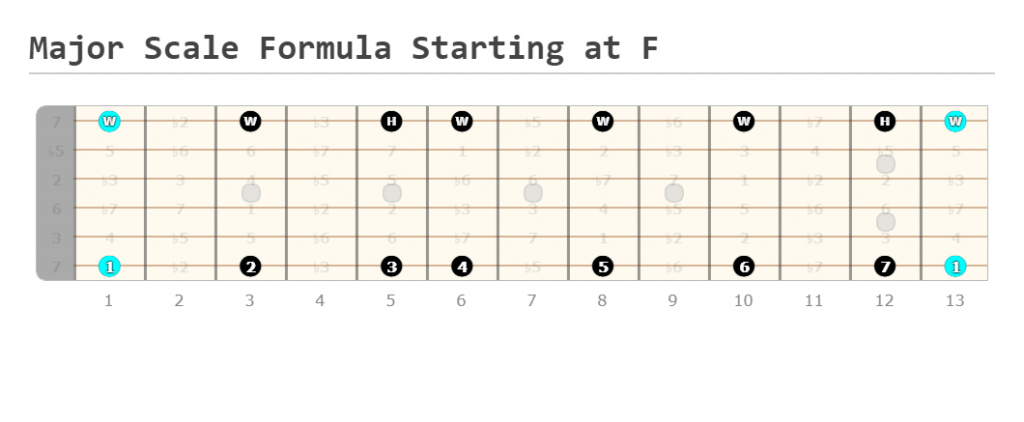Table of Contents
Understanding the Major Scale Formula
Understanding the major scale formula boils down to knowing the degrees and steps that make up a major scale.
What are the 7 notes of a major scale?
The 7 notes/scale degrees of a major scale are: 1-2-3-4-5-6-7
Each of these degrees represents a distance from the root note. These distances are called intervals.
For example, if we take the major scale formula and apply it to the C Note we’ll get:
C-D-E-F-G-A-B
What are the steps in a major scale?
The major scale, like any scale, can be visualized using a series of whole and half steps.
There are 7 total steps in the major scale. They are, starting from the root note:
Whole-Whole-Half-Whole-Whole-Whole-Half
This can also be abbreviated as: W-W-H-W-W-W-H
Using this series of Whole and Half steps, pick a root note on a single string and follow the steps.
For example, if you start on the 1st fret of the Low E string, which is an F note, you’ll end up with an F major scale.

Practicing and applying the major scale
Your next step in learning the major scale formula is learning the positions and theory.
Here you can learn the 5 major CAGED shapes, which are built around the open chords C, A, G, E, and D.
Check out this post to learn about 3-notes-per-string scale positions.



